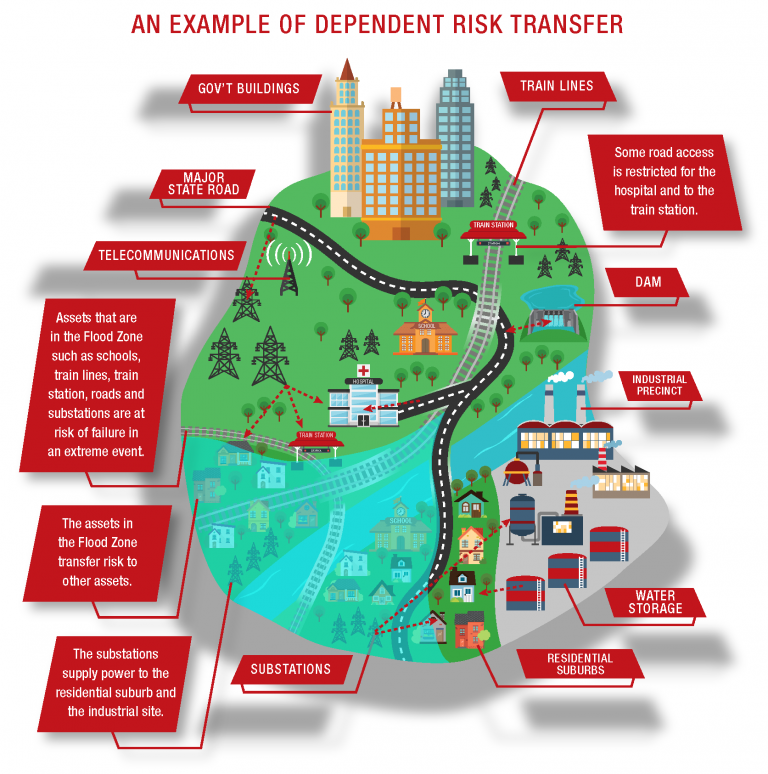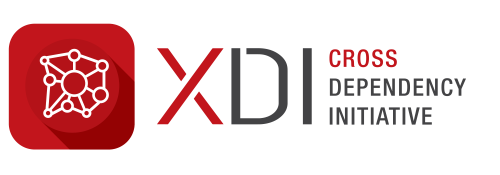The Missing Link In Green Recovery
The Green Recovery needs to invest in understanding climate risk and, importantly, cross dependency between critical infrastructure and business operations.

By Rohan Hamden, CEO
As the world talks climate change solutions at Climate Week 2020, XDI is calling out an important missing link in global Green Recovery spending — the need to invest in a deeper understanding of climate risk to our cross-dependent economies and the resilience we’ll need to mitigate intensifying climate change impacts.
With 21 cyclones hitting the Northern Hemisphere in rapid succession and heat and fire still devastating the US west coast, the impacts of climate change are playing out before us in real time. The costs of Australia’s bushfires that destroyed 12 million acres six months ago is estimated at US$5.4 billion in insurance claims. The cost of fires on the west coast of the US is likely to be much higher.
It’s welcome news that as much as US$800 billion is being invested in Green Recovery initiatives internationally, including new renewable energy and infrastructure projects, but it’s essential that all new infrastructure developments are planned and built with climate change resilience in mind. Climate risk to critical infrastructure — everything from energy, water, communications and transport to supply chain, investments and essential services — poses the greatest threat for the continued functioning of our economies as climate change impacts increase.
New infrastructure built with Green Recovery dollars will need to endure harsher conditions due to climate change. For businesses and government, understanding potential risks to critical and interdependent infrastructure must be achieved hand in hand with investment decisions. We have the technology to check these risks; it’s essential that it be rolled out across all investments from now on.
With heavy reliance on critical infrastructure and the interdependent technologies and systems that support them, there is a growing need to implement new analytic models and scenarios to assure operational resilience. In November XDI will launch a new report, “Good as the Weakest Link: A Review of Cross-Dependency Methods for Climate Change and Infrastructure,” reviewing the latest thinking on climate cross dependent risk and integrated adaptation.
A System of Systems Approach
XDI’s award winning work with businesses, councils and state governments has made it clear that modern infrastructure networks are increasingly complex and interconnected. These cross dependencies and their many moving parts necessitate a ‘system of systems approach’ to fully understand where climate risk vulnerabilities lie and how resilience can be optimised.
In the last several years XDI has deployed three state or province-scale Cross Dependent Ecosystems in Australia and Canada. The XDEcosystem is a secure, virtual landscape in which to map entire systems of critical infrastructure and dependent assets across geographical areas. It brings together multiple parties including Governments, asset owners, service providers and critical infrastructure organisations, enabling comprehensive climate change resilience management for all stakeholders by identifying shared risk between organisations.
Our work with the British Columbian government identified supply chain infrastructure dependencies from power, water, telecommunications and transport assets, and calculated the impacts on government services and buildings. This whole-of-infrastructure ecosystem approach forms the basis of collaborative adaptation, where each institution can work together to fix shared weaknesses in the supply chain. We believe this can be a blueprint for ensuring resilience during a massive green investment surge.

Climate impacts on critical infrastructure effect many stakeholders. A systems approach to climate risk management incorporates all parts of the system and assesses how to mitigate shared risk.
A minimum for Green Recovery investment decisions
Green Recovery spending decisions should:
- Assess extreme weather and climate impacts on new infrastructure for the whole asset life;
- Assess the frequency with which weather and climate change events will impact the delivery of services;
- Assess all complex linkages between interdependent networks to ensure the assets will have what they need to operate;
- Identify, cost and assess the effectiveness of adaptation actions for each asset to improve resilience;
- Provide high quality, detailed and accessible information to all investment stakeholders to ensure transparency and accountability.
We know how to do this, so there are no technical barriers to making this happen. We believe this integrated approach is critically important to truly understand climate risk and assure resilience in our Green Recovery investments.
Register to get your report
To receive our report (November release) “Only as Good as the Weakest Link: A Review of Cross-Depepency Methods for Climate Change and Infrastructure,” email info@xdi.systems
